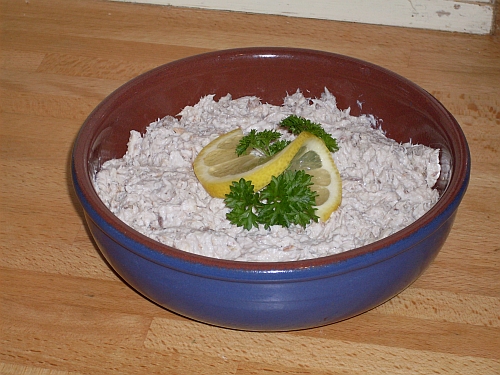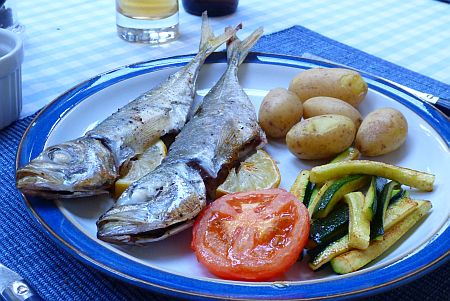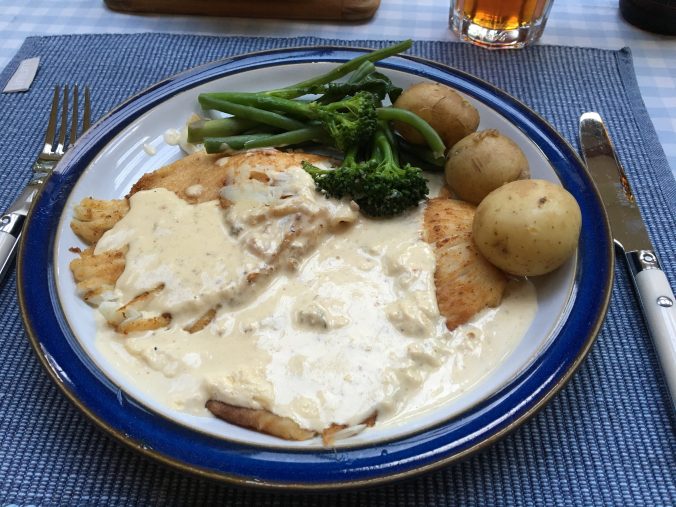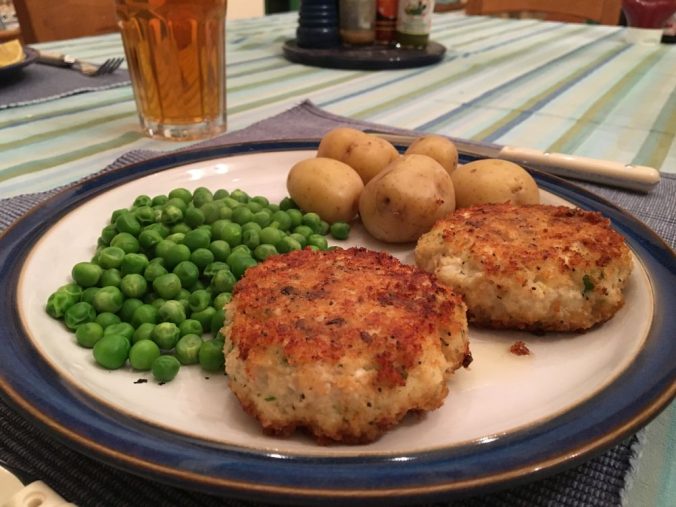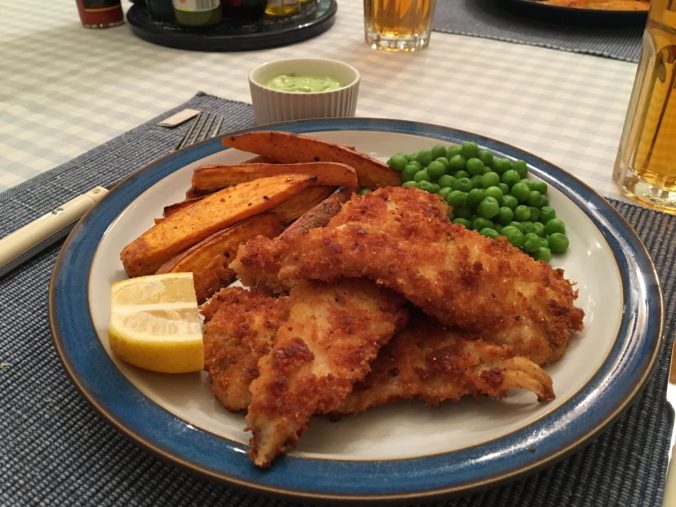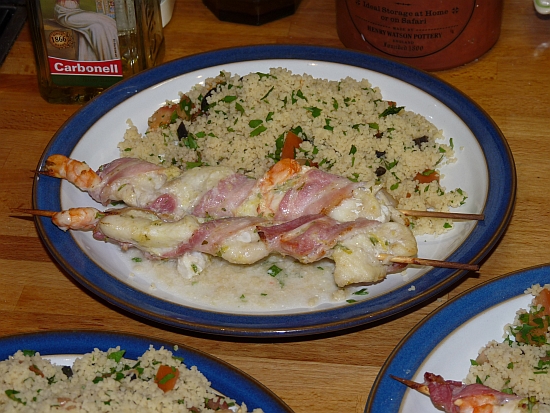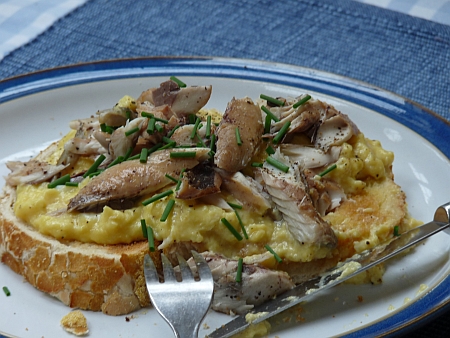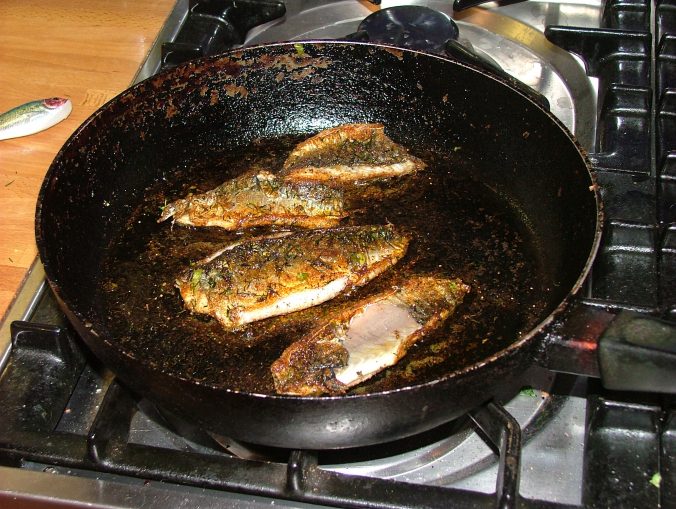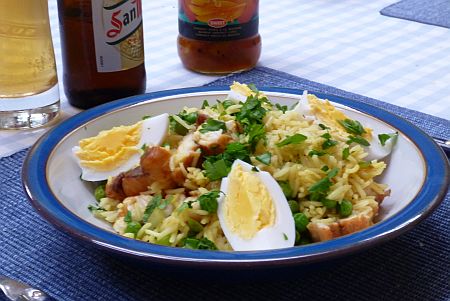Or Suro in Italian. The UK has a major commercial scad fishery but we export all of them to people who know good fish, we never see them in the shops. As a result, most anglers catching them along with mackerel throw them right back. Good for the scad, bad for the taste experience they just missed. Scad taste like a mild version of a sardine, and unfortunately just as bony, but who said life would be easy. Simple is often best, here is a simple oven fried version.
This is healthier than frying but has that nice fried texture. For four (or more, or less, depending on how much fish you have) you will need:
- 8 small or 4 average sized scad
- a lemon
- olive oil
- salt and pepper
Heat your oven to 200 deg C. Gut your scad, no need to scale them. Put a slice of lemon in each gut cavity, and season with salt and pepper. Wipe with olive oil. Place on a metal dish and place in your hot oven for 20 minutes.
That is all. Meanwhile you can make things to go with it, I roasted half a tomato, boiled some new potatoes and stir fried some courgette cut into McDonald-sized chip shapes.
If you want to experience a party in your mouth, try this fantastic sauce. Take the leaves from a large bunch of parsley, a small bunch of basil leaves, a few mint leaves, a tablespoon of capers, 3 anchovies or a blob of anchovy sauce, a gherkin, a tablespoon of wine vinegar and about four tablespoons of olive oil. Whiz it to a sauce with a hand blender. Add more olive oil to make it slightly runny but you don’t want it all oily. You can play around with the combination of herbs and seasonings, it should be herby and slightly sharp. Some people add a bit of Dijon mustard, I like to bulk it out with chives but that is because I have loads. This sauce keeps well in the fridge and wakens up any simple fish dish.
